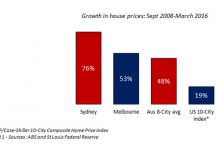Recently, my business partner, Paul Gambles who is a regular on CNBC, appeared on the Money Channel and gave his views on China:
We used to talk about the $64,000 question, but I think the current and future state of the Chinese economy is the 64 billion RMB question. Everyone has a theory about this, but the real answer is that nobody really knows.
There’s a real problem in looking at the Chinese economy in that the data is very difficult to trust. We don’t know how reliable the data is. Now, to some extent that’s true of all economic data around the world. We don’t believe the data the American or the British or the European governments produce. But it’s even more so in China, partly because the government have such strong control over the data, but also because the government have such strong control over the economy as well.
In a free market, we have a good idea of what’s actually going on underneath the surface of the economy. In a market like China, where the economy is very controlled, it’s very difficult to know that normal market processes have been followed. When banks lend money in the States it’s really determined by, or should be determined by, commercial factors and assessing the risk and return. Admittedly, that went a little bit crazy in America over the last fifteen or twenty years when financial engineering changed some of those methods, but as a general principle, what should happen in a free market is that capital will chase a return. In a controlled market like China, the government can define precisely where they want capital to go to.
America, for the past few years, has been trying to create jobs and get the unemployed back to work. In China, if they have unemployed, they could get them back to work tomorrow; they could define exactly how many jobs to create. They have the ability to do that. They have some very sophisticated people. The People’s Bank of China, the central bank, has over 2000 registered economists sitting there every day figuring out which levers to pull, which buttons to press, which adjustments to make in order to make the Chinese economy function. From that point of view, it’s a very efficient machine in that they can make it do exactly what they want it to do.
The real problem with that is that it doesn’t have any kind of market control. In a free market, if you do something stupid, if you make a bad investment, then generally the market will catch you out; it will tell you it’s a bad investment; it will price it as a bad investment and you will lose money because of it. In China, they don’t really have that correction mechanism, so our biggest worry about China is that nobody really knows what’s underneath, and what’s actually underneath might not be what everybody expects to be there because it has because it’s been so manipulated by the government and external forces.
It’s been so controlled that actually the problems can be much worse than many of us realize. We won’t know until we get there, but because the markets haven’t been able to make their normal corrections and their normal adjustments during this last twenty years of Chinese growth, there is actually a very high risk that when we get there, the correction could be far worse than most people are talking about right now.
Everyone raves about the 8.9% GDP, but because we don’t really know all the nuts and bolts that make the Chinese economy work, we don’t know where that 8.9% comes from. 8.9% as a headline number actually sounds quite good, but if that’s something that’s been manipulated by extra stimulus and debt being forced into the system, then we don’t really know the quality of that growth. If it’s 8.9% of what we would call normal GDP, self-sustaining GDP that grows organically out of the economy and it’s real and it’s not interfered with, then in that case we would be very happy with that, but in China we don’t really think that’s the case.
In China, the market doesn’t have any adjustment mechanism or the ability to push back, so a lot of this 8.9% could be what we would regard as being phony growth, not real growth. That’s really the question for China – it’s a matter of how real and sustainable is all this growth or how much of it has been manipulated?
For something like 20 years, there were two charts that went up by around 10% per year. One was the Chinese economy, and the other was Bernard Madoff’s investments, and we all know that Bernie Madoff’s investments weren’t real.
Our worry is just how real those Chinese returns are and how much of China’s growth has been induced by artificial government control and external influences. The problem with that is that if there have been externalities, that will have led to a whole bunch of problems in the system. If loans have been forced into sectors where banks really shouldn’t have been lending, then we’re going to end up with an enormous amount of bad debt.
To be continued…
| The above data and research was compiled from sources believed to be reliable. However, neither MBMG International Ltd nor its officers can accept any liability for any errors or omissions in the above article nor bear any responsibility for any losses achieved as a result of any actions taken or not taken as a consequence of reading the above article. For more information please contact Graham Macdonald on [email protected] |




